1dokladAlmaAty.ppt
- Количество слайдов: 33
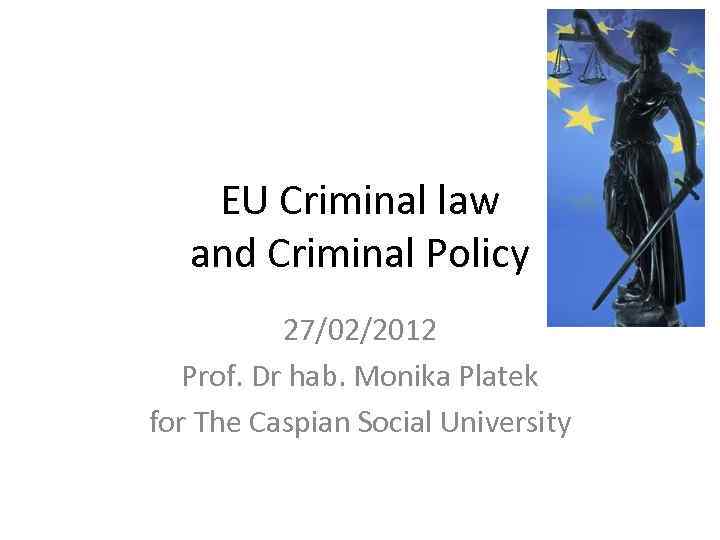 EU Criminal law and Criminal Policy 27/02/2012 Prof. Dr hab. Monika Platek for The Caspian Social University
EU Criminal law and Criminal Policy 27/02/2012 Prof. Dr hab. Monika Platek for The Caspian Social University
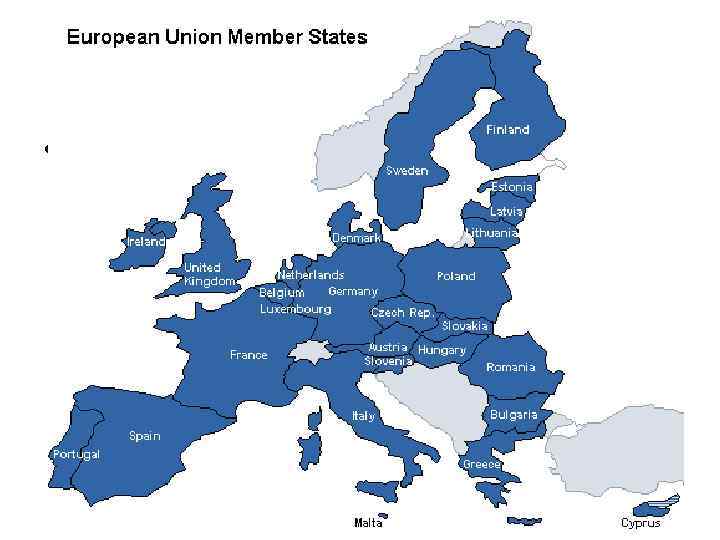 • q
• q
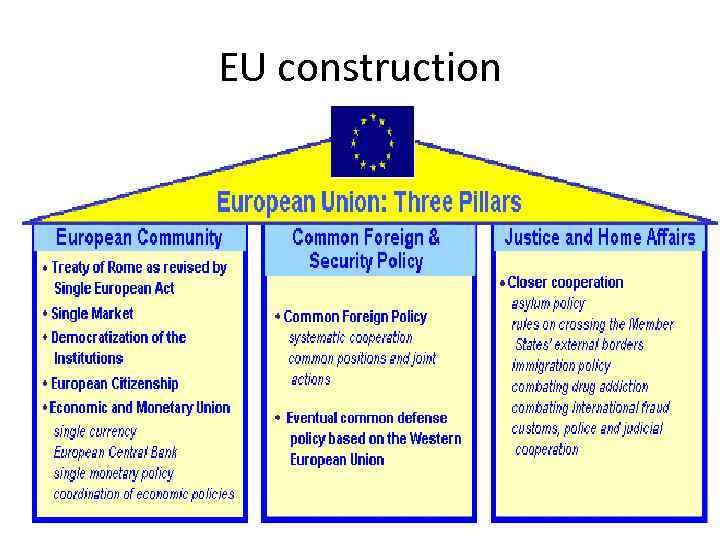 EU construction • x
EU construction • x
 • The Treaties • The road to European Union began with three separate treaties dating from the 1950 s: • the European Coal and Steel Community (ECSC), • the European Atomic Energy Community (Euratom), • the European Economic Community (EEC). • Collectively, they became known as the European Community. • The Maastricht Treaty on European Union, which took effect in November 1993, was a major overhaul of the founding treaties. It created the "three pillars" of the European Union as it exists today. • Pillar One incorporates the three founding treaties and sets out the institutional requirements for EMU. It also provides for supplementary powers in certain areas, e. g. environment, research, education and training. • Pillar Two established the Common Foreign and Security Policy (CFSP) which makes it possible for the Union to take joint action in foreign and security affairs. • Pillar Three created the Justice and Home Affairs policy (JHA), dealing with asylum, immigration, judicial cooperation in civil and criminal matters, and customs and police cooperation against terrorism, drug trafficking and fraud.
• The Treaties • The road to European Union began with three separate treaties dating from the 1950 s: • the European Coal and Steel Community (ECSC), • the European Atomic Energy Community (Euratom), • the European Economic Community (EEC). • Collectively, they became known as the European Community. • The Maastricht Treaty on European Union, which took effect in November 1993, was a major overhaul of the founding treaties. It created the "three pillars" of the European Union as it exists today. • Pillar One incorporates the three founding treaties and sets out the institutional requirements for EMU. It also provides for supplementary powers in certain areas, e. g. environment, research, education and training. • Pillar Two established the Common Foreign and Security Policy (CFSP) which makes it possible for the Union to take joint action in foreign and security affairs. • Pillar Three created the Justice and Home Affairs policy (JHA), dealing with asylum, immigration, judicial cooperation in civil and criminal matters, and customs and police cooperation against terrorism, drug trafficking and fraud.
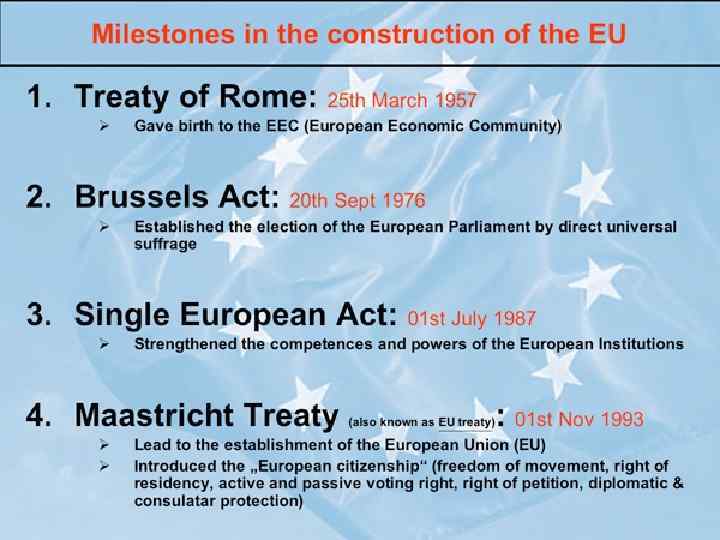 • q
• q
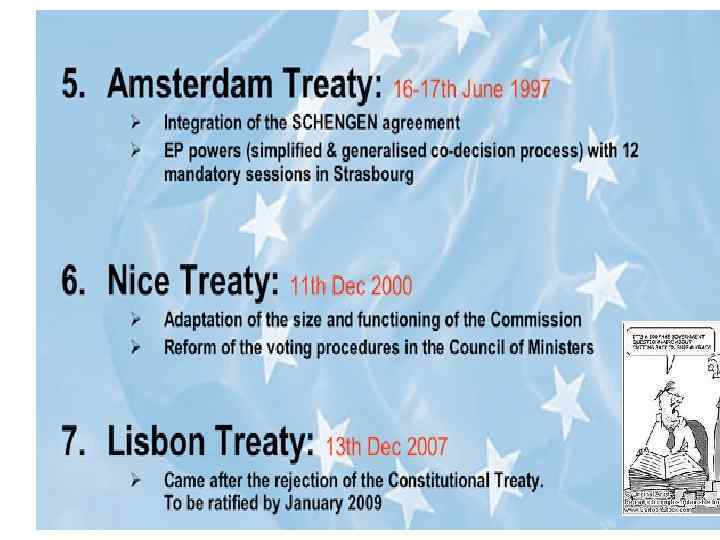
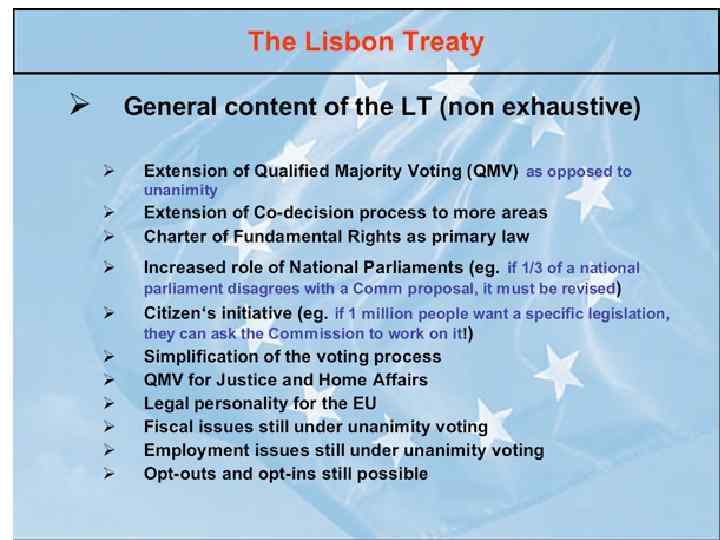 • q
• q
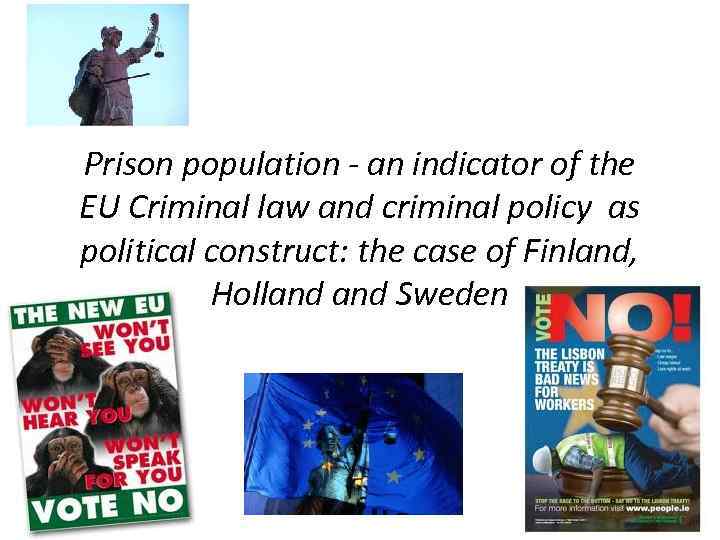 Prison population - an indicator of the EU Criminal law and criminal policy as political construct: the case of Finland, Holland Sweden
Prison population - an indicator of the EU Criminal law and criminal policy as political construct: the case of Finland, Holland Sweden
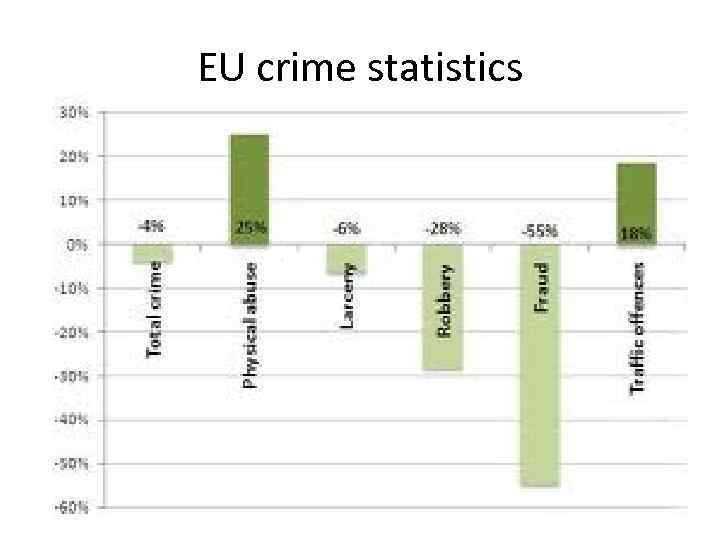 EU crime statistics • w
EU crime statistics • w
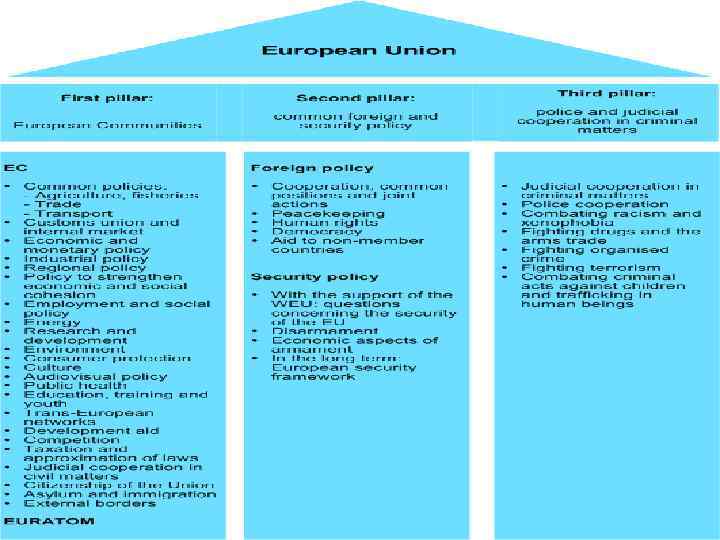
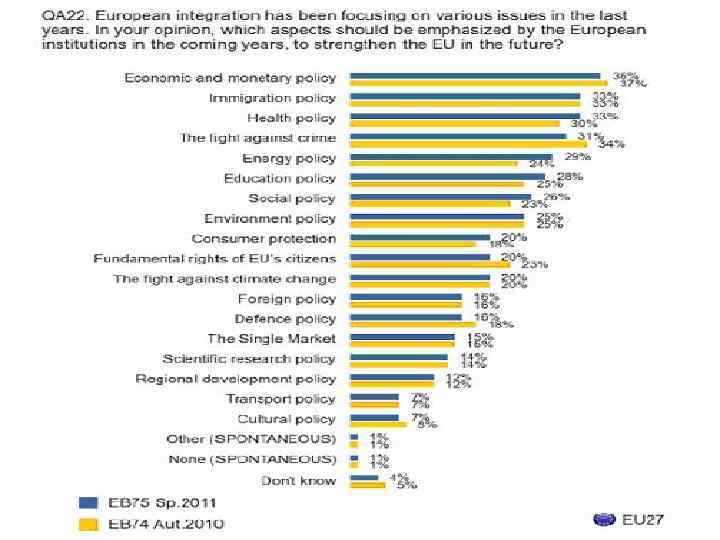
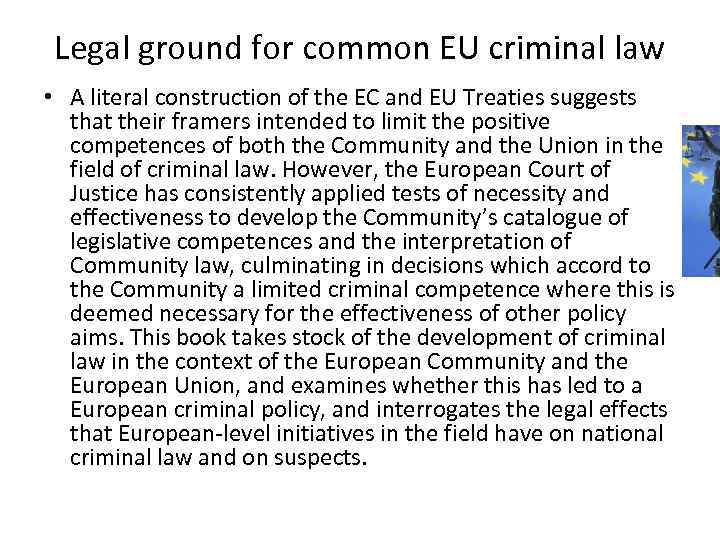 Legal ground for common EU criminal law • A literal construction of the EC and EU Treaties suggests that their framers intended to limit the positive competences of both the Community and the Union in the field of criminal law. However, the European Court of Justice has consistently applied tests of necessity and effectiveness to develop the Community’s catalogue of legislative competences and the interpretation of Community law, culminating in decisions which accord to the Community a limited criminal competence where this is deemed necessary for the effectiveness of other policy aims. This book takes stock of the development of criminal law in the context of the European Community and the European Union, and examines whether this has led to a European criminal policy, and interrogates the legal effects that European-level initiatives in the field have on national criminal law and on suspects.
Legal ground for common EU criminal law • A literal construction of the EC and EU Treaties suggests that their framers intended to limit the positive competences of both the Community and the Union in the field of criminal law. However, the European Court of Justice has consistently applied tests of necessity and effectiveness to develop the Community’s catalogue of legislative competences and the interpretation of Community law, culminating in decisions which accord to the Community a limited criminal competence where this is deemed necessary for the effectiveness of other policy aims. This book takes stock of the development of criminal law in the context of the European Community and the European Union, and examines whether this has led to a European criminal policy, and interrogates the legal effects that European-level initiatives in the field have on national criminal law and on suspects.
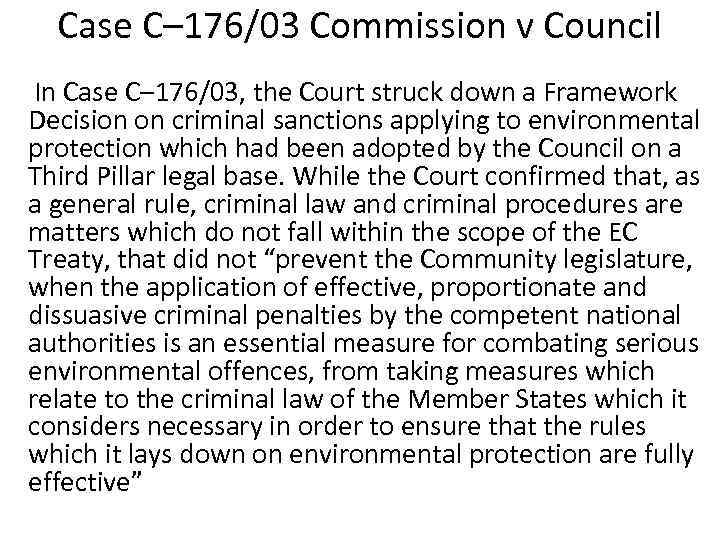 Case C– 176/03 Commission v Council In Case C– 176/03, the Court struck down a Framework Decision on criminal sanctions applying to environmental protection which had been adopted by the Council on a Third Pillar legal base. While the Court confirmed that, as a general rule, criminal law and criminal procedures are matters which do not fall within the scope of the EC Treaty, that did not “prevent the Community legislature, when the application of effective, proportionate and dissuasive criminal penalties by the competent national authorities is an essential measure for combating serious environmental offences, from taking measures which relate to the criminal law of the Member States which it considers necessary in order to ensure that the rules which it lays down on environmental protection are fully effective”
Case C– 176/03 Commission v Council In Case C– 176/03, the Court struck down a Framework Decision on criminal sanctions applying to environmental protection which had been adopted by the Council on a Third Pillar legal base. While the Court confirmed that, as a general rule, criminal law and criminal procedures are matters which do not fall within the scope of the EC Treaty, that did not “prevent the Community legislature, when the application of effective, proportionate and dissuasive criminal penalties by the competent national authorities is an essential measure for combating serious environmental offences, from taking measures which relate to the criminal law of the Member States which it considers necessary in order to ensure that the rules which it lays down on environmental protection are fully effective”
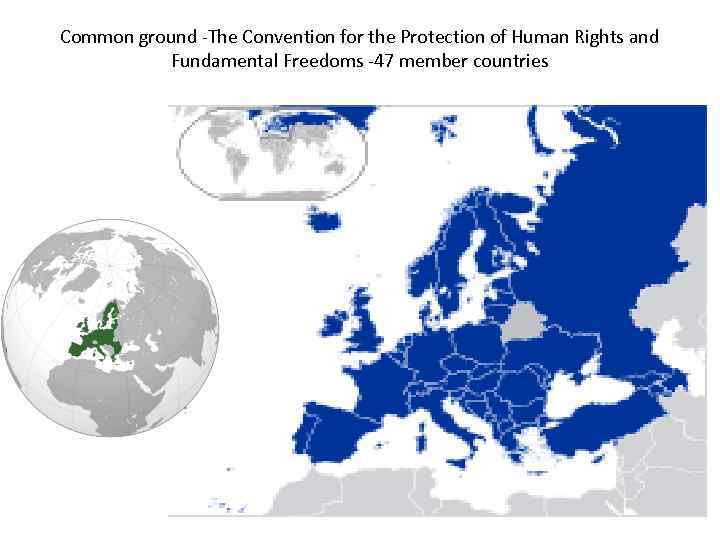 Common ground -The Convention for the Protection of Human Rights and Fundamental Freedoms -47 member countries
Common ground -The Convention for the Protection of Human Rights and Fundamental Freedoms -47 member countries
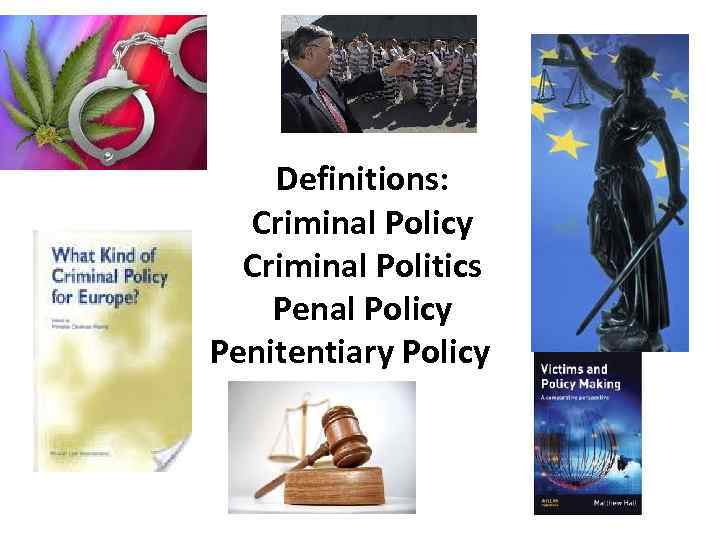 Definitions: Criminal Policy Criminal Politics Penal Policy Penitentiary Policy.
Definitions: Criminal Policy Criminal Politics Penal Policy Penitentiary Policy.
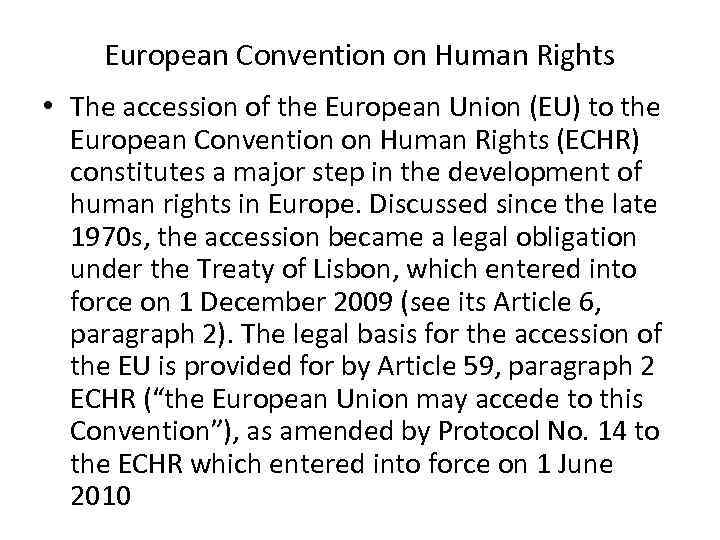 European Convention on Human Rights • The accession of the European Union (EU) to the European Convention on Human Rights (ECHR) constitutes a major step in the development of human rights in Europe. Discussed since the late 1970 s, the accession became a legal obligation under the Treaty of Lisbon, which entered into force on 1 December 2009 (see its Article 6, paragraph 2). The legal basis for the accession of the EU is provided for by Article 59, paragraph 2 ECHR (“the European Union may accede to this Convention”), as amended by Protocol No. 14 to the ECHR which entered into force on 1 June 2010
European Convention on Human Rights • The accession of the European Union (EU) to the European Convention on Human Rights (ECHR) constitutes a major step in the development of human rights in Europe. Discussed since the late 1970 s, the accession became a legal obligation under the Treaty of Lisbon, which entered into force on 1 December 2009 (see its Article 6, paragraph 2). The legal basis for the accession of the EU is provided for by Article 59, paragraph 2 ECHR (“the European Union may accede to this Convention”), as amended by Protocol No. 14 to the ECHR which entered into force on 1 June 2010
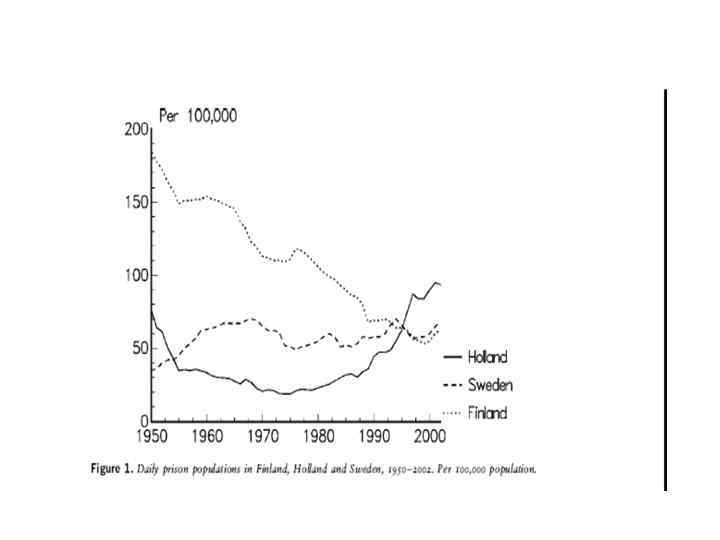
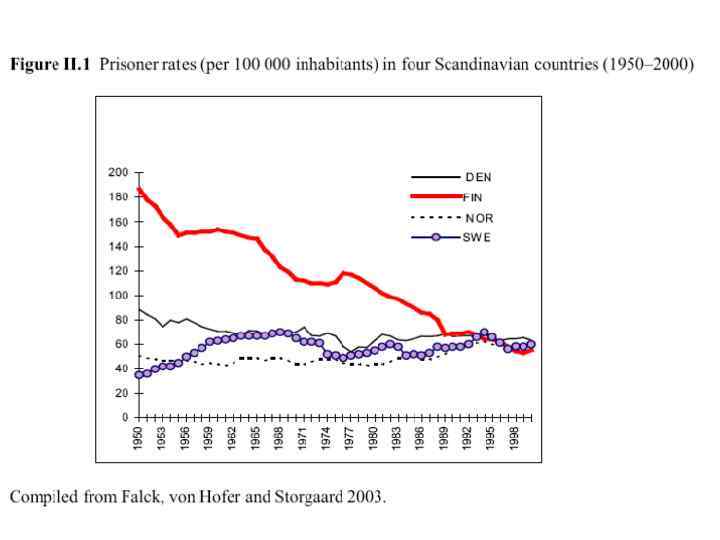
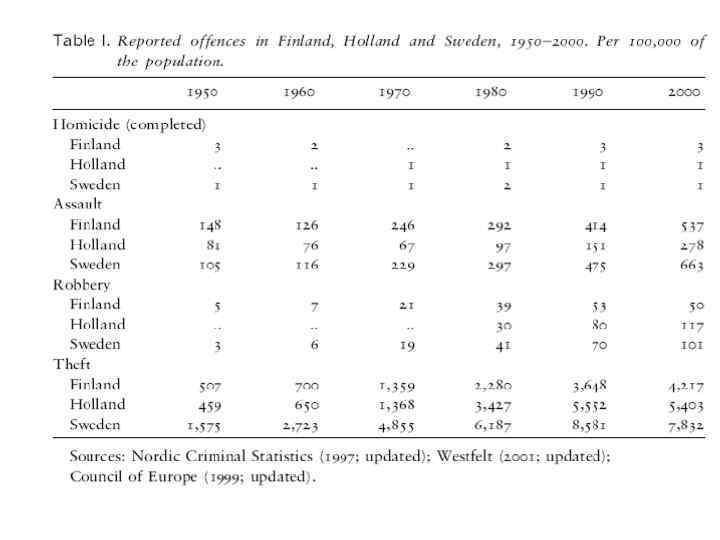
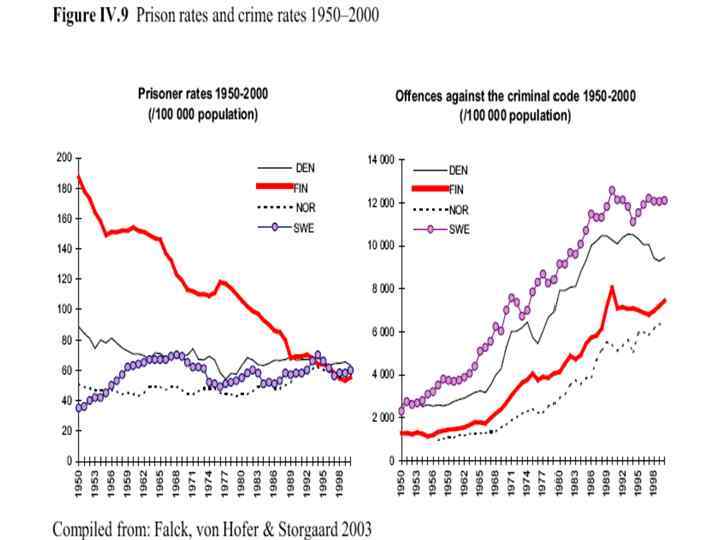
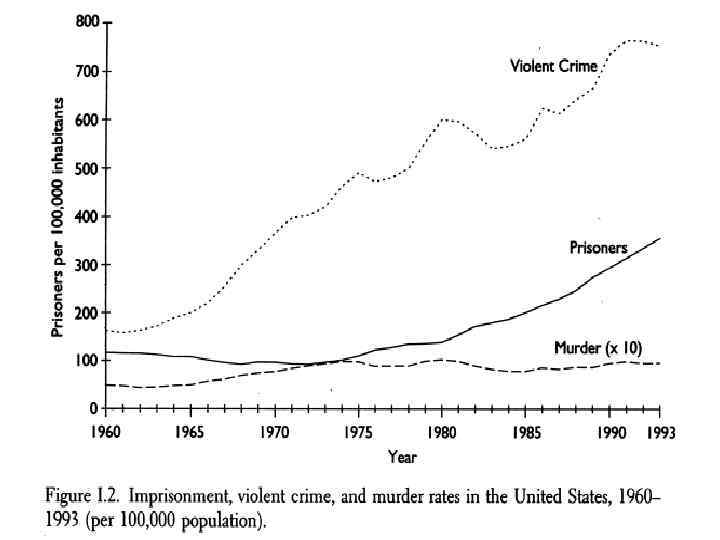
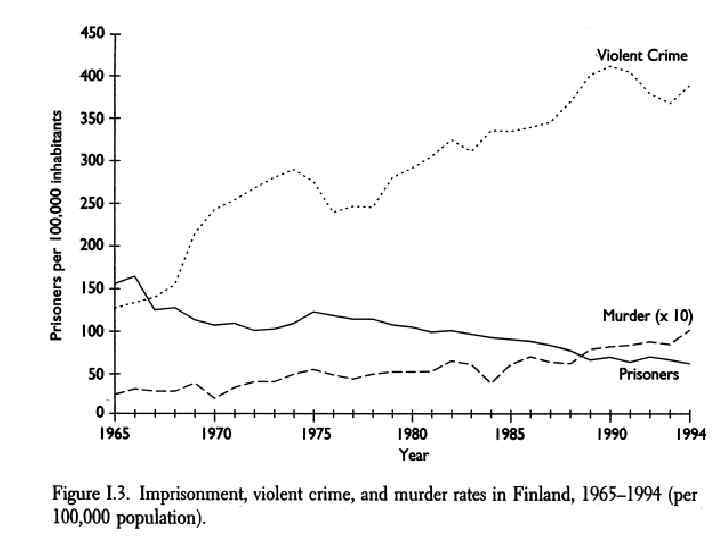
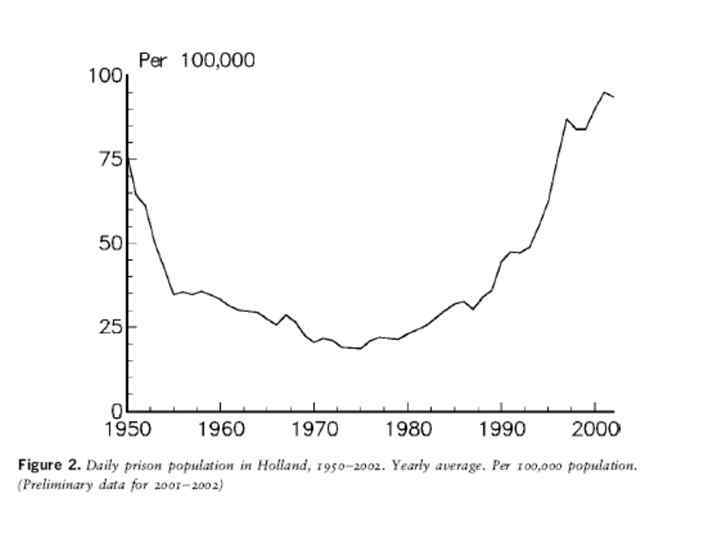
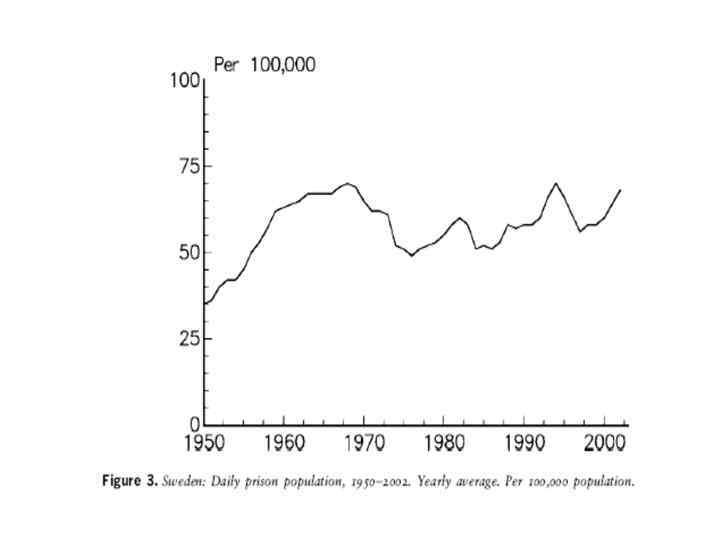
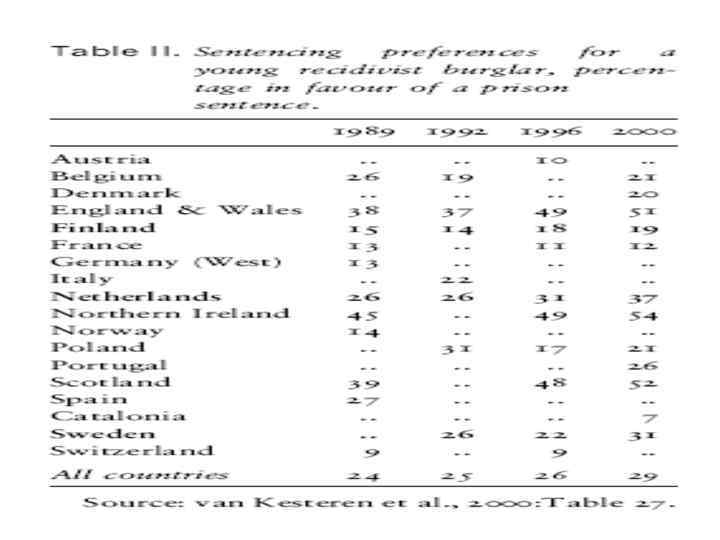
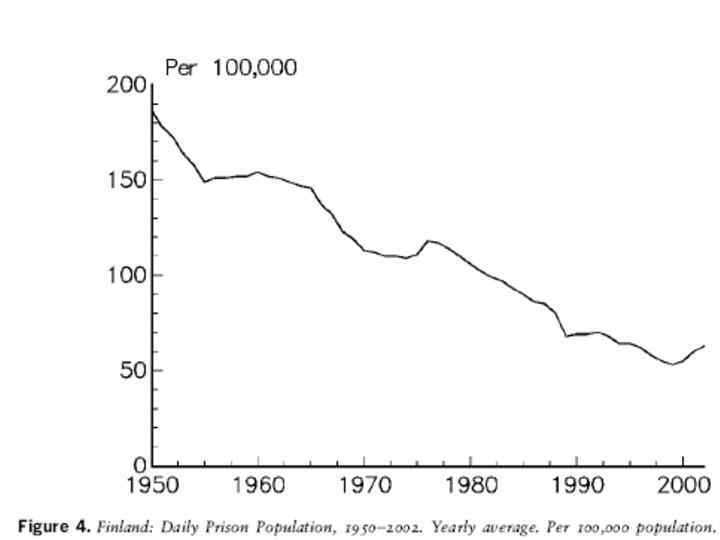
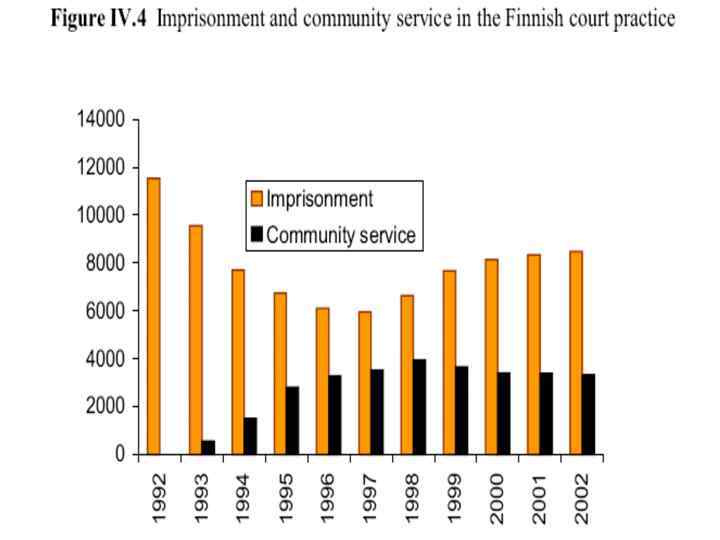
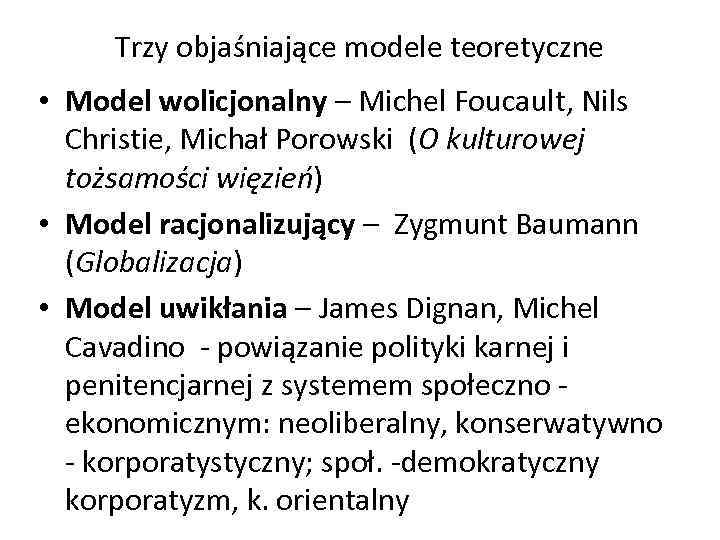 Trzy objaśniające modele teoretyczne • Model wolicjonalny – Michel Foucault, Nils Christie, Michał Porowski (O kulturowej tożsamości więzień) • Model racjonalizujący – Zygmunt Baumann (Globalizacja) • Model uwikłania – James Dignan, Michel Cavadino - powiązanie polityki karnej i penitencjarnej z systemem społeczno ekonomicznym: neoliberalny, konserwatywno - korporatystyczny; społ. -demokratyczny korporatyzm, k. orientalny
Trzy objaśniające modele teoretyczne • Model wolicjonalny – Michel Foucault, Nils Christie, Michał Porowski (O kulturowej tożsamości więzień) • Model racjonalizujący – Zygmunt Baumann (Globalizacja) • Model uwikłania – James Dignan, Michel Cavadino - powiązanie polityki karnej i penitencjarnej z systemem społeczno ekonomicznym: neoliberalny, konserwatywno - korporatystyczny; społ. -demokratyczny korporatyzm, k. orientalny
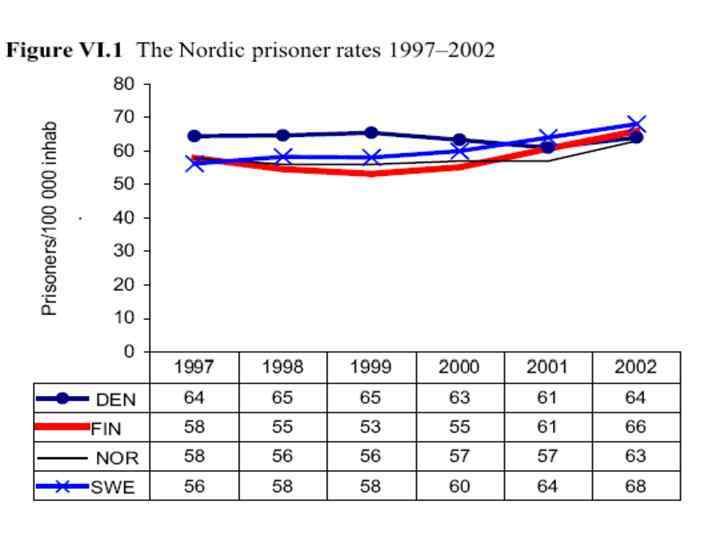
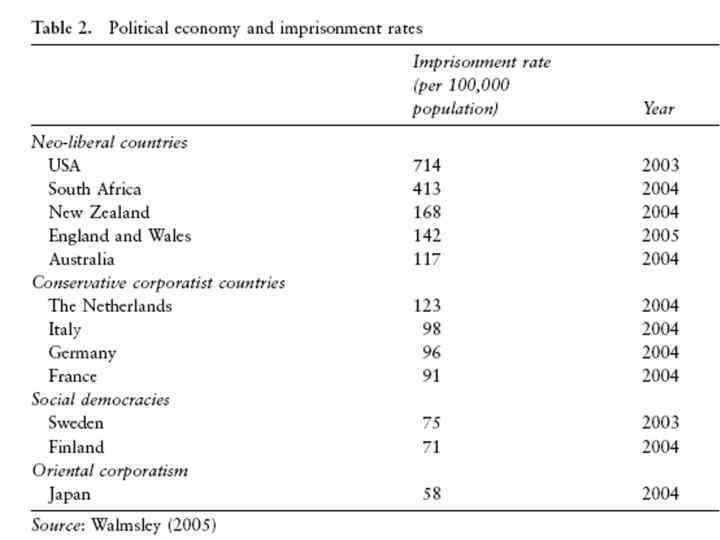
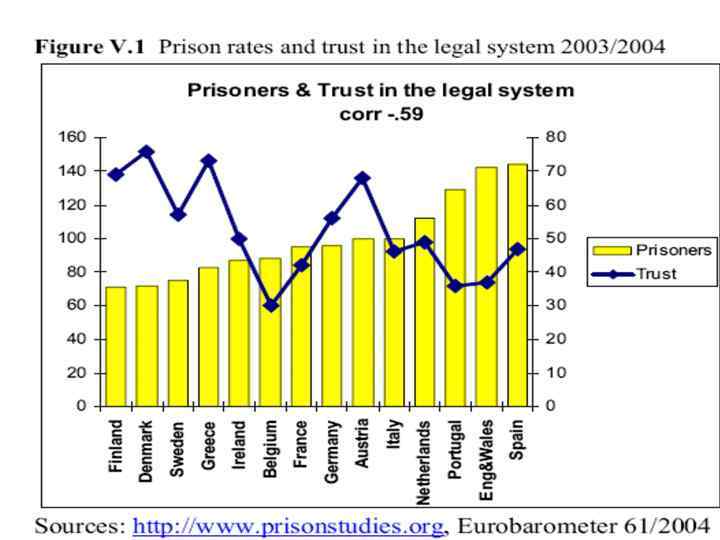
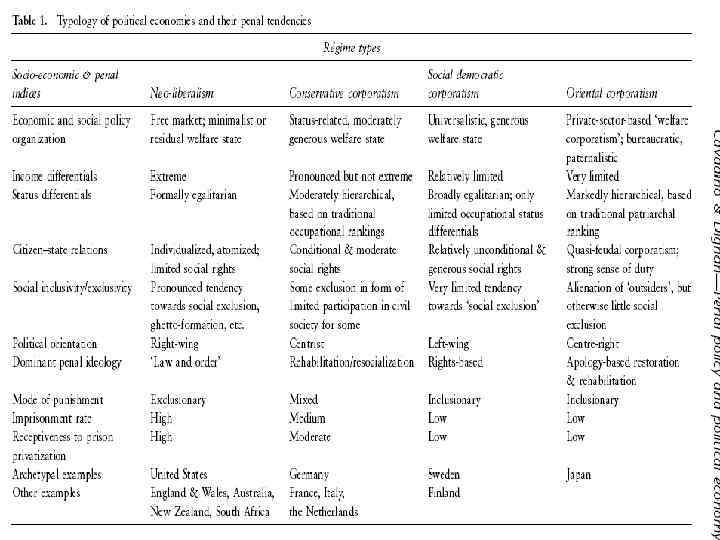
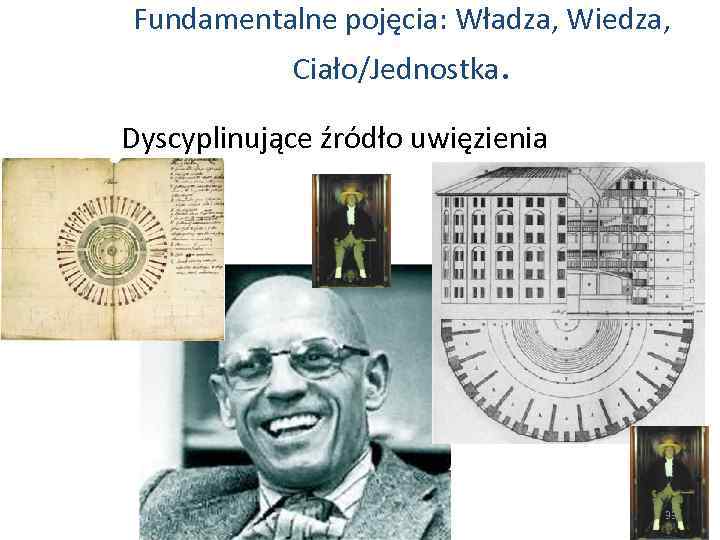 Fundamentalne pojęcia: Władza, Wiedza, Ciało/Jednostka. Dyscyplinujące źródło uwięzienia 33
Fundamentalne pojęcia: Władza, Wiedza, Ciało/Jednostka. Dyscyplinujące źródło uwięzienia 33
